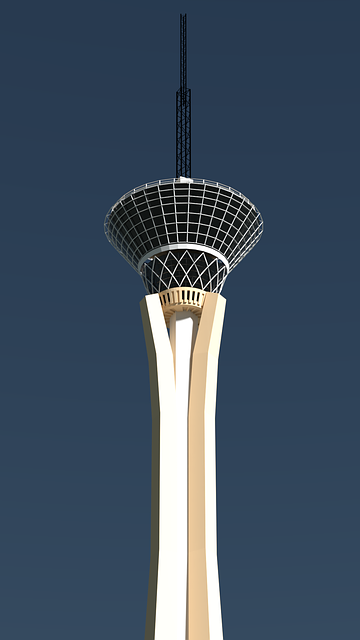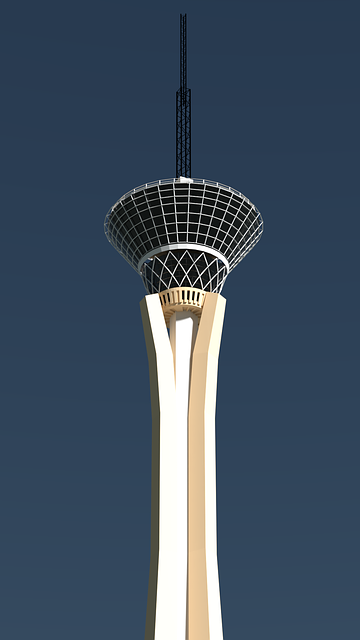Brick and mortar casinos have evolved from opulent to minimalist designs, blending architecture and technology for immersive gaming experiences. Strategic layout, aesthetic appeal, and luxurious amenities enhance player satisfaction. Future trends include digital integration, virtual/augmented reality, themed spaces, and sustainable design practices, catering to diverse audiences while minimizing environmental impact.
The allure of Brick and Mortar Casinos, where players gather under one roof to test their luck, has evolved significantly over time. From opulent resorts to sleek, modern designs, casino architecture reflects changing trends, technology, and cultural influences. This article delves into the historical transformation of brick-and-mortar casino design, explores key architectural elements that enhance the gaming experience, and discusses emerging trends shaping the future of these iconic destinations. Discover how casinos are redefining entertainment and hospitality for a new generation of players.
- The Evolution of Brick and Mortar Casino Design: A Historical Perspective
- Key Elements of Successful Casino Architecture
- Future Trends Shaping the Brick and Mortar Casino Experience
The Evolution of Brick and Mortar Casino Design: A Historical Perspective

The design of brick-and-mortar casinos has evolved significantly over time, reflecting changing societal attitudes towards gambling and the emergence of new technological advancements. In their early days, casinos were often designed as grand and opulent structures, with elaborate interiors that aimed to impress and attract high rollers. These early casinos, such as those in Monte Carlo and Las Vegas, set the standard for luxury and opulence, featuring intricate architectural details, ornate ceilings, and lavish decor.
As gambling became more mainstream and accessible, casino design began to shift. The focus shifted from purely aesthetic appeal to creating functional spaces that could accommodate a larger number of visitors while still providing an enjoyable experience. This led to the development of more modern and minimalist designs, where clean lines and open spaces became the norm. Today, brick-and-mortar casinos strive to create immersive environments, blending architecture with cutting-edge technology, interactive experiences, and themed areas to offer diverse entertainment options for a broad range of patrons.
Key Elements of Successful Casino Architecture

In the realm of Brick and Mortar Casinos, architecture plays a pivotal role in setting the tone for an immersive gaming experience. Key elements of successful casino architecture include strategic design that maximizes flow and accessibility, ensuring players can navigate effortlessly between different gaming zones. This involves well-appointed entrances and exits, clear signage, and efficient layouts that facilitate movement without congestion.
Furthermore, esthetic appeal and ambiance are paramount. Casino architects must strike a balance between creating visually stunning spaces with themed decor, lighting, and sound systems that enhance the overall atmosphere. Incorporating elements like luxurious seating areas, elegant bars, and art installations not only cater to players’ sensory needs but also foster a sense of sophistication and entertainment, making each visit memorable.
Future Trends Shaping the Brick and Mortar Casino Experience

The future of brick and mortar casinos is being reshaped by technological advancements and evolving consumer preferences. One prominent trend is the integration of digital elements, such as interactive gaming tables with integrated screens and mobile apps that enhance the player experience. Virtual reality (VR) and augmented reality (AR) technologies also hold promise, offering immersive experiences that blur the lines between physical and virtual worlds. These innovations aim to create more engaging and personalized environments, appealing to a broader demographic.
Another significant trend is the focus on creating unique, themed spaces that cater to diverse interests. Casinos are increasingly incorporating elements from popular culture, such as movie franchises or iconic destinations, to craft immersive experiences. Sustainable design practices are also gaining traction, with casinos embracing eco-friendly materials and energy-efficient systems to reduce their environmental footprint. These future trends underscore the evolution of brick and mortar casinos, ensuring they remain vibrant hubs of entertainment and social interaction.
Brick and mortar casinos have long been the cornerstone of the gaming industry, evolving over time to create immersive experiences. By understanding historical design trends, incorporating key architectural elements, and anticipating future innovations, casino architects can continue to craft destinations that captivate visitors. As the industry adapts to changing preferences and technology, the art of casino architecture will play a vital role in shaping memorable brick and mortar casino experiences for years to come.






